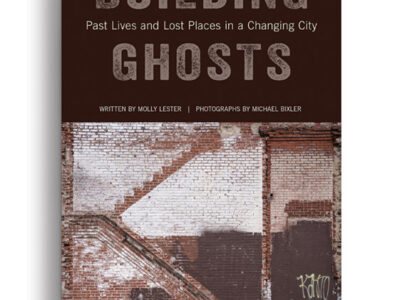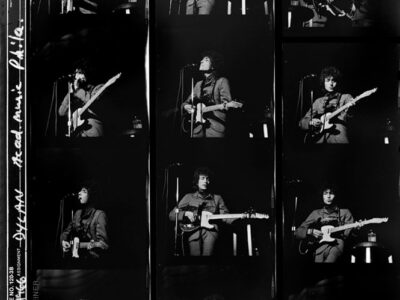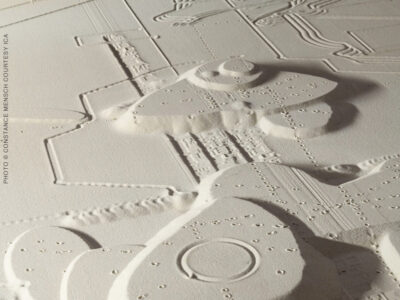
When a suburban commuter finally got out of his car, he found himself viewing an old street—and its people—through new eyes.
Photography by John Hansen-Flaschen | Text by Samuel Hughes
At first, Dr. John Hansen-Flaschen couldn’t make out the words. He would be driving east on Lancaster Avenue—his usual commuting route from the Main Line suburb of Wynnewood to the Hospital of the University of Pennsylvania —when he began to notice a man standing near the 40th Street intersection.
“He was holding up a wooden sign that was a mosaic of newspaper and magazine clippings,” recalls Hansen-Flaschen, professor of medicine and chief of the Pulmonary and Critical Care Division at HUP. “But I couldn’t read it from my car.”
Though he didn’t realize it at the time, that sign would soon lead him into a new world, one that had once seemed depressingly familiar.
Like most commuters from the western suburbs, Hansen-Flaschen viewed the four-mile stretch of Lancaster Avenue that angles through West Philadelphia as a means to an end, and a grim one at that. The commercial artery that dates back to the earliest days of the Republic had gradually hardened, atrophied, lost its pulse.
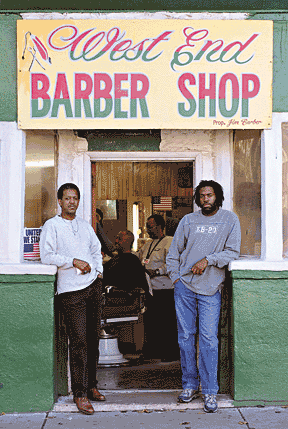
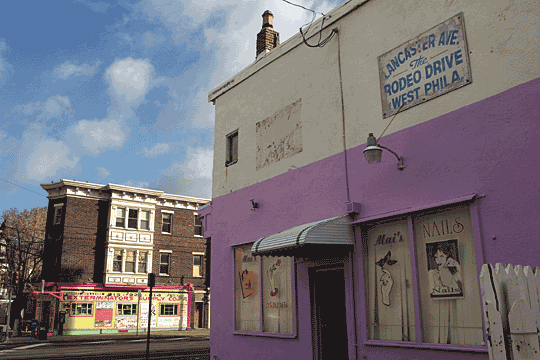
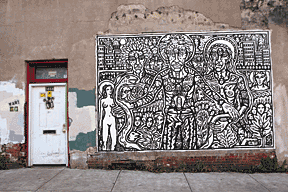
“For a long time, it was just a frightening place for me,” he acknowledges. “I’d keep my windows closed, doors locked, and eyes on the road.”
But he kept seeing the man with the illegible sign, and one morning in late 2000 he stopped his car and got out. Having recently purchased a digital camera, he asked the man if he would be willing to have his picture taken. The man agreed.
That evening, Hansen-Flaschen downloaded the images onto his computer. Still unable to read the words on the sign, he adjusted the contrast. Finally, he was able to make out the message. The gist of it was: “Support Your Community Businesses.”
“He had cut out a message using different words from different articles to support the community businesses—‘Keep your money in your own neighborhood,’” Hansen-Flaschen says. “It was a very rational, clear message—except that nobody could read it without the benefit of computer enhancement.”
After the Annals of Internal Medicinepublished one of his photographs of the sign man, Hansen-Flaschen began chronicling the avenue between 39th Street and 63rd Street, near the border of Montgomery County. He got to know its businesses—D.C. Tires, Sir Richard’s tavern, Ace Diner, Honest Lou’s Exterminators—and many of the people who worked in them and lived nearby. Along the way he taught himself photography—the elements of composition as well as the nuances of manipulating digital images on the computer screen.
“I went back at least 19 times during the year 2001,” he says. “I took more than 3,000 photographs altogether. And I continue to have an interest in what the images show—the history and culture of the street that lies behind the photographs. It has a very rich history.
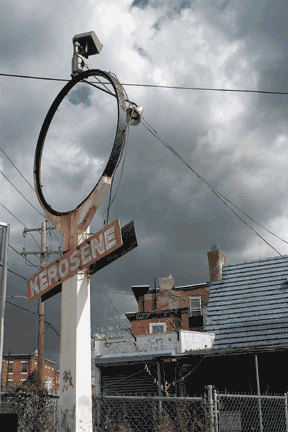
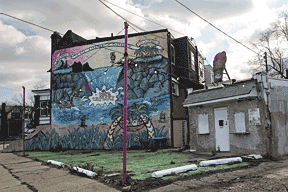
“I’d come home with a picture and then wonder, ‘What is this!? Why is it the way it is?’” he explains. “Then I’d go back and hang out and ask, ‘What’s the history of this place?’ from whoever would be out on the street. Or sometimes I’d go in and see it. Really, what I’m doing, through the camera, is seeing a familiar place in a way that’s making it much more interesting to me.”
In a sense, Hansen-Flaschen says, he’s a tourist in his own neighborhood. “I’ve been all over the world, to strange places—India and China and Japan, South America and Central America—and kicked around neighborhoods in those places, seeing how they’re different and learning how other people live. And here I find myself a tourist right on my commuting route to and from work, with a similar mindset but a much-closer-to-home kind of interest.”
At first, the natives tend to view him with a mixture of curiosity and suspicion. “People ask if I’m a developer, because this is [a neighborhood] in rapid development. Other people say, ‘Are you a cop?’ After a while I learned that the easiest answer was, ‘I’m hoping to make a book about Lancaster Avenue, and I’m taking pictures of the street for the book.’” That answer has the added advantage of being both true and something of a compliment.
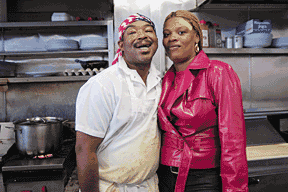
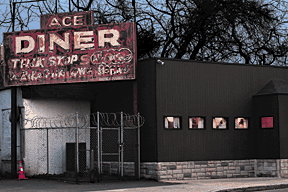
“Here I was respecting their neighborhood and trying to document it,” he explains. “I said, ‘It’s a street in transition and I’m interested in how it changes,’ and that would open me up to learn a little bit more about who they were and what was going on.”
Of course, not everyone wanted him to find out what was going on. On several different occasions at the same street corner, he recalls, “I’d have several big guys come up and tell me, ‘If I were you I wouldn’t take pictures here. It’s the wrong place to take pictures, buddy. Move along now; we’re looking for your car.’ It was clear that I was making people very uncomfortable with the photographs.
“For the most part, though, I found people very friendly, and a number of them were interested in telling stories about the street—and then saying, ‘Tell me when your book comes out.’”
Today, Hansen-Flaschen feels that Lancaster Avenue is slowly starting to make its way back after reaching rock bottom roughly a decade ago. “There are several city and community re-development initiatives underway now,” he says. “Just over the past year I’ve seen a dozen of the places that were interesting to me knocked down or rebuilt or repainted. So it’s clear that, from whatever initiative this is coming from, there’s a great deal of redevelopment on the street now. And I expect it’s going to look very different 10 years from now than what we’re seeing.”
Unfortunately, he adds, “I’m really not convinced that there’s much value placed on some of the places that interest me. There are some turn-of-the-century buildings built by people of means, with an architect, and they’re recognized as historical. But what about D.C. Tires? At first glance, it’s a broken-down, run-down place, but it has a very rich, 50-year history. Why isn’t that a historical building?”
Clearly, this project has been a labor of love—and learning—for Hansen-Flaschen. “Part of the message I’m trying to give here is that a lot of people drive this road, and they don’t see this. Even when we’re seeing it, we’re not seeing it. But when you take a picture of it, and you take it home to a familiar environment, and you’re not shy about looking at it anymore—and particularly if you bring the colors out a little bit—then you see it!”


